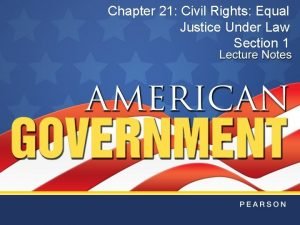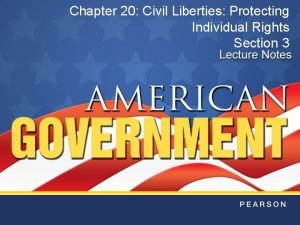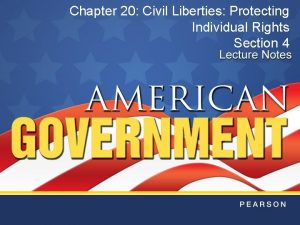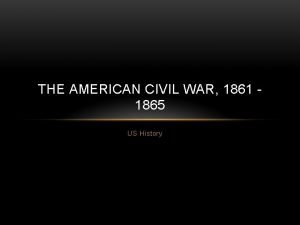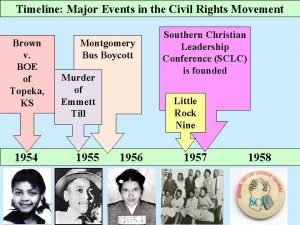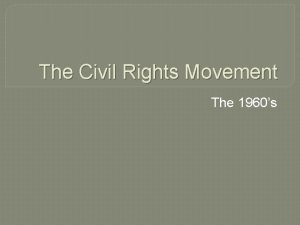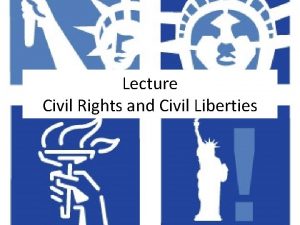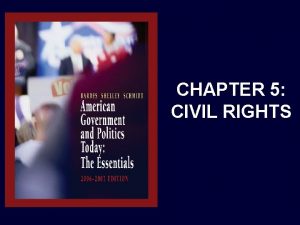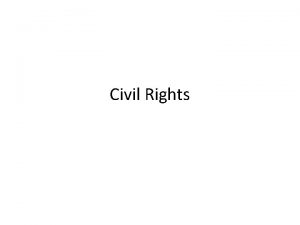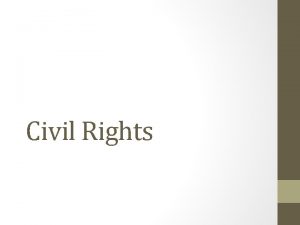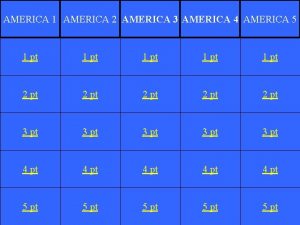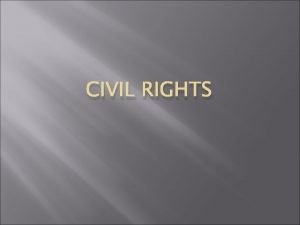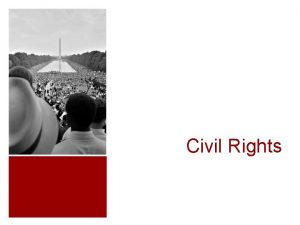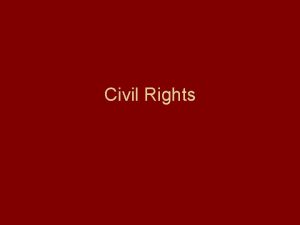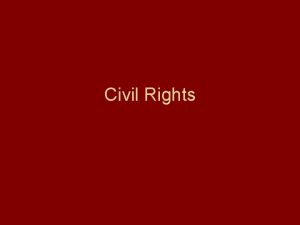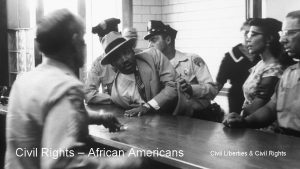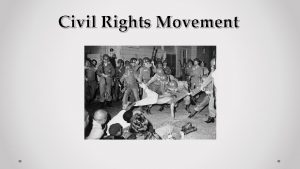CHAPTER 11 CIVIL RIGHTS IN AMERICA CIVIL RIGHTS
















- Slides: 16

CHAPTER 11 CIVIL RIGHTS IN AMERICA

CIVIL RIGHTS Rights which include equal status and treatment and the right to participate in government. - Regardless of race, creed, ethnicity, national origin, sex, age, ability (disability) and other factors. Legal Sources - U. S. Constitution - Federal Laws: Civil Rights Act of 1964 and Voting Rights Act of 1965 - Supreme Court Rulings: Brown v. Board of Education - State and Municipal Laws (local government can make strides)

EQUAL PROTECTION OF THE LAW 14 th Amendment: “No State shall…deny to any person within its jurisdiction the equal protection of the laws. ” - Equal Protection Clause: requires states to apply laws equally to one person as another under the equal circumstances. - Shift from restrictions on federal government to the states. - The courts have used this clause to expand the meaning and the reach of Civil Rights to many groups across the United States.

REASONABLE DISTINCTION The government (judicial review applied by courts) is allowed to distinguish between different groups and population if it is reasonable and furthers government’s interests. 1) Rational Basis Test: treating groups differently is valid under the rational basis test if the law in question establishes reasonable methods of accomplishing a legitimate goal of government. (driver’s license) 2) Intermediate Scrutiny Test: Higher standard to determine if a law’s reason for treating someone unequally is lawful. The government must show an “important” reason for treating others differently. (sexbased or speech [loud music ordinance]) 3) Strict Scrutiny Test: When 1) a fundamental right is being restricted and 2) a classification is being made based on race or national origin. Government must show a “compelling” reason that is in the public interest for the group classification. (affirmative action programs/Japanese Internment)

HISTORY AND LEGAL PROTECTION OF DISCRIMINATION Pre-Civil War: - Dred Scott v. Sandford (1857): “But it is too clear for dispute, that the enslaved African race were not intended to be included, and formed no part of the people who framed and adopted this declaration. ”Roger Taney, Chief Justice of the Supreme Court - Basically, either free or slave, African Americans were not citizens. Post-Civil War: - 13 th, 14 th, and 15 th Amendment (grants African-American men the right to vote) - Reconstruction [period or era]: refers to the period and efforts after the U. S. Civil War (1865 -1877) made by the federal government to restructure the political, legal, and economic systems in the southern states that had seceded from the Union. - This Republican “radical” movement was met with a harsh reactionary movement that would be directed at the African-American population once the federal government gave full-powers back to the Southern states.

Extremists groups like the Klux Klan used violence and terrorism to to keep African-Americans from pursuing civil rights. Media and literature was created in order to distort the image of and stigmatize African-Americans. Jim Crow Laws were passed (primarily by state and municipal legislatures) to separate populations by racial groups. - Segregation was supported by the Supreme Court. - 1) 14 th Amendment did not protect against discrimination by private individuals. - 2) Plessy v. Ferguson (1893): separate but equal doctrine.

REVERSING JIM CROW 1909 - NAACP was established. National Association for the Advancement of Colored People. - Gaines v. Canada (1938): states must provide equal educational facilities for African-Americans or admit them to white schools (University of Missouri Law School). - Brown v. Board of Education Topeka, KS (1954): overturned Plessy and found “separate educational facilities are inherently unequal. ” This precedent could then be applied to all areas of social and political discrimination. Desegregation: the elimination of laws, customs, or practices under which people from different religions, ancestries, ethnic groups, races and other groups are restricted to specific or separate public facilities, neighborhoods, schools, organizations, or the like. - Affirmative Action: a policy that requires employers and institutions to provide opportunities for members of certain historically underrepresented groups.

CIVIL RIGHTS ARE NOT GUARANTEED, THEY ARE WON: CIVIL RIGHTS MOVEMENT Tools: • The Courts: Brown v. Board acted as a means to overturn the system, but the case only applied to education. => Civil Rights Movement - Civil disobedience: nonviolent refusals to obey the law (Sit-ins). - Riots: For example, the Watts Riot (Rebellion) drew national and international attention to the local discrimination which existed in Los Angeles. - Media: For example, Bloody Sunday (Selma) was nationally televised and helped change public opinion => Led to public policy changes.

OBSTACLES TO CHANGE “Segregation now, segregation tomorrow, segregation forever. ”- Governor George Wallace

VIVIAN MALONE ENTERS FOSTER AUDITORIUM AT THE UNIVERSITY OF ALABAMA

CHANGES TO LAW 24 th Amendment (1964): Banned the use of poll taxes in federal elections. Civil Rights Act of 1964: Banned discrimination based on race, color, national orientation, or sex in voting, employment, and public accommodations. Voting Rights Act of 1965: Banned tests in voting (literacy tests). Civil Rights Act of 1968: Banned discrimination in sale, rental, and financing of housing.

WOMEN’S RIGHTS Equal Pay Act of 1963: required employers to offer equal pay to men and women doing the same work.

HISPANICS- CESAR CHAVEZ - Formed the United Farm Workers Union - Fought for Immigration Reform and Worker’s Rights

ASIAN-AMERICANS 1) Chinese Exclusion Act (1892)Prohibited (and limited) “ethnic Chinese” from immigrating to the United States. 2) Immigration Act of 1924 - expanded the prohibition to all people of Asian decent. • These laws restricted immigration AND naturalization. => often led to further discrimination: inability to own land, property, businesses, ghettoization (Chinatown) Overthrown by the Immigration and Nationality Act of 1965 Richard Aoki- Member of the Asian Americans for Action Organization and the Black Panthers.

PEOPLE WITH DISABILITIES ADA (Americans with Disabilities Act) 1990: prohibits discrimination against people with disabilities, and required accessibility in public buildings and transportation.

HOMOSEXUALS AND LGBT COMMUNITYHARVEY MILK Obergefell v. Hodges 2015
 Civil rights webquest
Civil rights webquest Chapter 21 civil rights equal justice under law
Chapter 21 civil rights equal justice under law Chapter 20 civil liberties protecting individual rights
Chapter 20 civil liberties protecting individual rights Chapter 14 postwar prosperity and civil rights
Chapter 14 postwar prosperity and civil rights Civil rights act of 1957 apush
Civil rights act of 1957 apush Chapter 20 civil liberties protecting individual rights
Chapter 20 civil liberties protecting individual rights Chapter 20 civil liberties protecting individual rights
Chapter 20 civil liberties protecting individual rights We can do a rap of the map of the us
We can do a rap of the map of the us Your name
Your name Repetition in let america be america again
Repetition in let america be america again Why is called latin america
Why is called latin america Happening e performance
Happening e performance America civil war
America civil war Civil rights timeline of events
Civil rights timeline of events Civil rights sitins
Civil rights sitins Rosa parks mother
Rosa parks mother Right to die
Right to die

